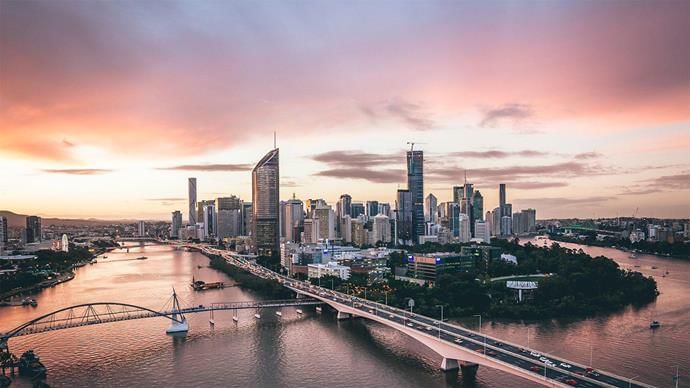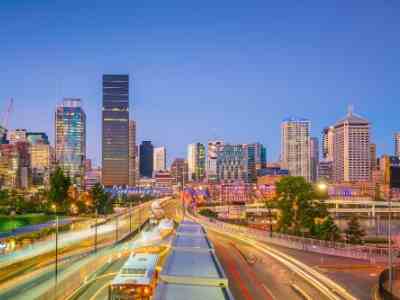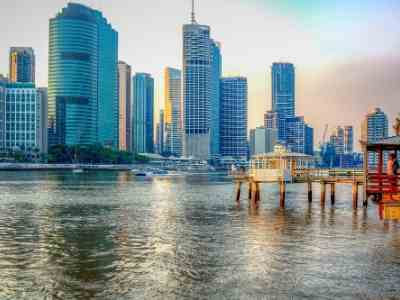The Cost of Living in Brisbane as a Student

Brisbane is one of the cheapest major cities in Australia. Whether you’re a domestic or international student, calculating the cost of living will help you make the most of your university experience in the Queensland capital.
From basics like food and rent to less essential costs like eating out, you’ll need to account for all kinds of expenses in your budget. This guide to the living cost in Brisbane for international students will help you crunch the numbers.
Overview of Expenses
This table offers a general overview of the cost of living in Brisbane. All figures are approximate and may vary depending on your location in the city.
| Weekly rent for an apartment | $400 |
| Monthly public transport ticket | $140 |
| Overseas Student Health Cover - Minimum cost is around | $400 |
| Groceries (average per household in QLD) | $240 |
| Meal in a mid-range restaurant | $20 |
| Meal in a high-end restaurant | $40 |
Accommodation

Compared to cities like Sydney and Melbourne, the cost of student accommodation in Brisbane is relatively affordable. According to rent.com.au, the average price for an apartment in Brisbane’s metro area was $400 a week in January 2020. Rental prices tend to go up the closer you get to the CBD.
Living in accommodation where utilities (such as electricity and internet) are included in the rent can help reduce the Brisbane cost of living as a student.
Study Costs
When it comes to weighing up living expenses in Brisbane for international students, tuition fees are an important consideration. The Times Higher Education estimates that undergraduate international students pay between $20,000 and $45,000 upfront for an Australian university degree, although costs can vary depending on the discipline you choose to study.
Brisbane has multiple universities for students to choose from, so you’ll be able to compare costs before enrolling. In addition to the cost of your course, factoring items like textbooks, laptops and stationery into your budget is also important.
Transport

Australia has some of the best value-for-money public transport in the world. If you plan to get around Brisbane using the local buses, trains and ferries, Expatistan predicts you’ll only pay around $140 for a monthly ticket (prices can vary depending how far you need to travel and the amount of trips you take per day).
Food and Groceries
The cost of groceries in Australia tends to be higher than the global average. In Queensland, a typical household spends $240 a week on groceries (according to data from Budget Direct). As a student, you’ll likely spend less than that (especially if you’re only buying groceries for yourself).
Groceries are usually slightly cheaper in large Australian cities like Brisbane compared to regional areas. Most locals shop at big supermarket chains like Woolworths, Coles and Aldi, but Brisbane also has several fresh food markets.
When eating out, you’ll be able to get a decent meal (such as a burger and chips) for around $20. Meals at high-end restaurants usually cost around $40 (not including drinks).
Insurance
All international students in Australia are required to have Overseas Student Health Cover (OSHC). This type of insurance covers doctor appointments, hospital treatments, ambulance transport, and some pharmaceuticals. The price of OSHC varies depending on the level of cover, but Canstar estimates that basic cover for singles costs approximately $438 per year.
Lifestyle

Brisbane is surrounded by tourist destinations, including the Gold Coast and Sunshine Coast. It’s also home to sporting venues and a lively nightlife, so you’ll have plenty of things to spend any extra money on when you’re not busy studying.
If you don’t have much cash left over after paying for all your essentials, there are also lots of cheap and free things to do. You could explore the riverside entertainment precinct South Bank, go for a scenic walk along the Kangaroo Point Cliffs, or see a free exhibition at the Gallery of Modern Art.
Browse our student accommodation in Brisbane today
If you are looking for part-time work to help pay your expenses, check out our guide to 4 flexible jobs for uni students.


